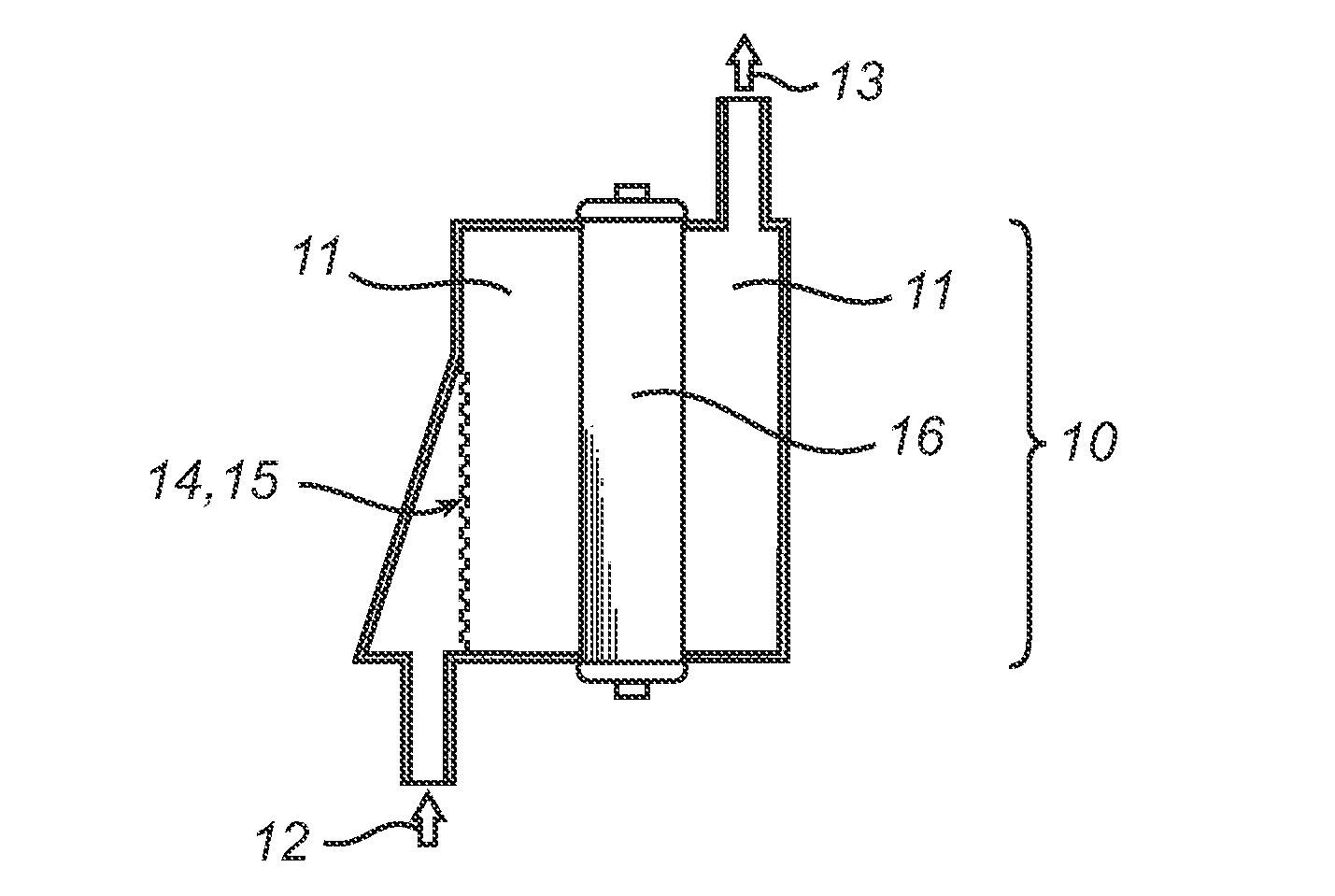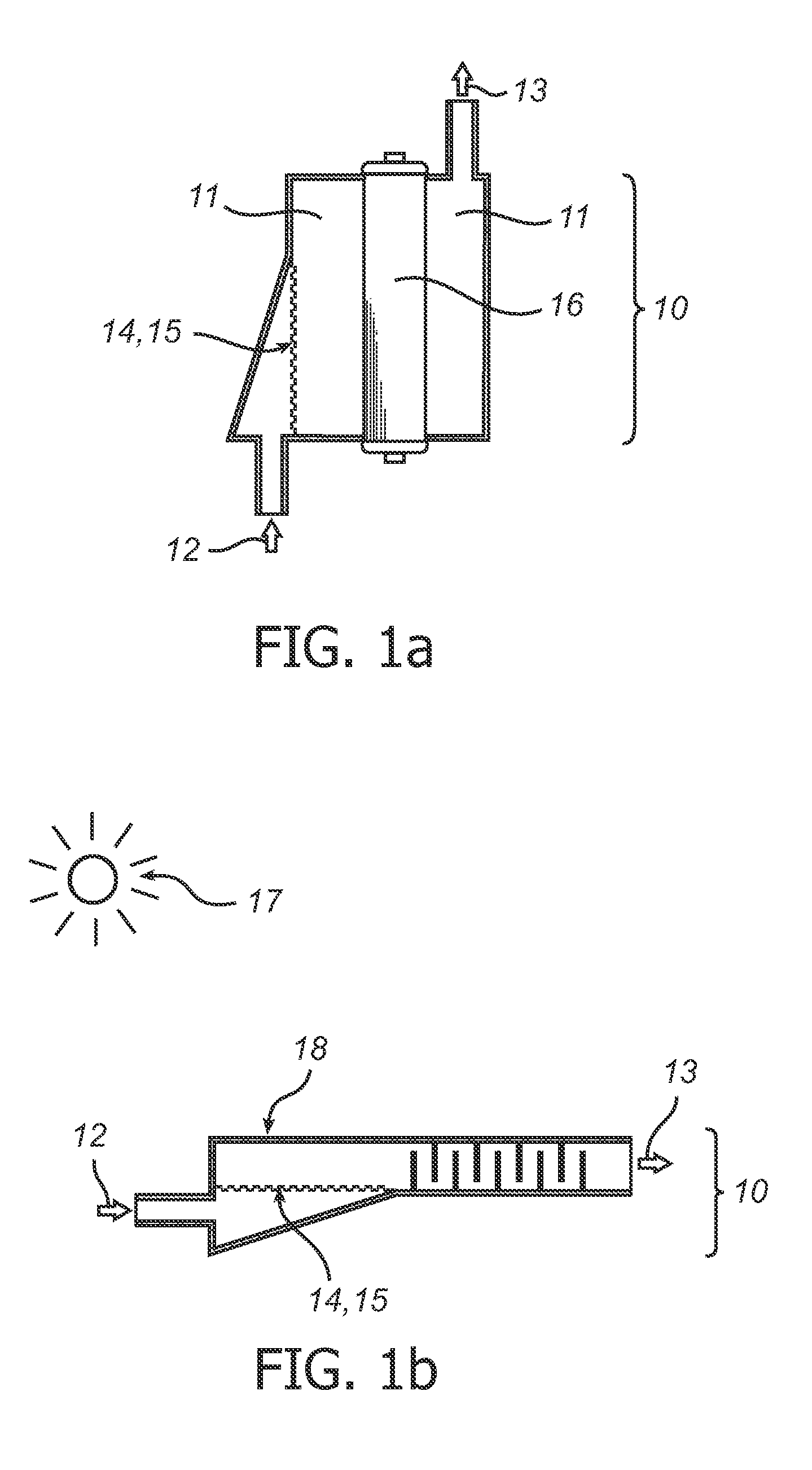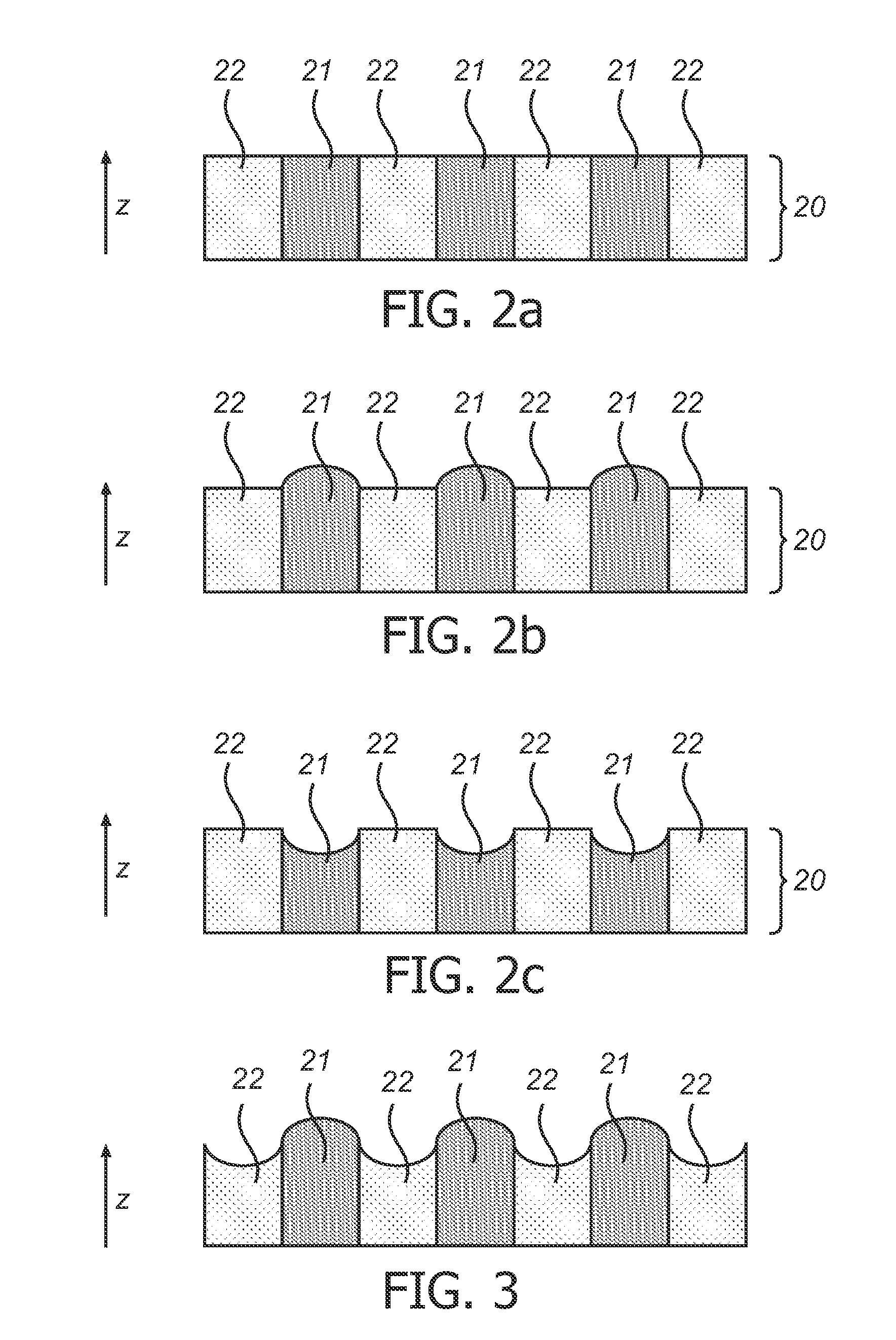Photo-responsive layer and layer assembly
a photo-responsive layer and layer technology, applied in the direction of material analysis using wave/particle radiation, material analysis by optical means, instruments, etc., can solve the problems of unsafe drinking water production and consumption, and achieve the effect of reducing production costs and increasing topographical differences
- Summary
- Abstract
- Description
- Claims
- Application Information
AI Technical Summary
Benefits of technology
Problems solved by technology
Method used
Image
Examples
exemplary embodiment 1
[0062]This embodiment corresponds to the photo-responsive layer of FIG. 2b, which is prepared by the production method described below. In this embodiment the photo-responsive layer comprises a material comprising first domains of a chiral nematic (cholesteric) structure, hence comprising alternating planarly oriented molecules and randomly oriented molecules. The areas of planarly oriented molecules form the first domains and the areas with randomly oriented molecules i.e. isotropic form the second domains. In this example, the same composition is applied over the surface of the substrate. The material of first domains and second domains contains a polymerized material based on the monomers and specific concentrations shown in Table 1.
[0063]
TABLE 1Chemical structures of the monomers used in embodiment 1Typical MaterialChemical structureconcentrationMonomer 110 to 90 wt. % More typically 20 to 50 wt. %Monomer 210 to 90 wt. % More typically 20 to 50 wt. %Monomer 310 to 90 wt. ...
exemplary embodiment 2
[0079]This embodiment corresponds to the photo-responsive layer in FIG. 3. This embodiment is similar to embodiment 1, with the difference that in the photo-responsive layer, the isotropic (randomly oriented) areas are replaced by areas with molecular order such that there is a preferential orientation of the molecules perpendicular to the surface (homeotropic orientation). As a result, the photo-induced surface deformation is larger and deformations >4 μm are obtained compared to embodiment 1.
[0080]Homeotropic areas are obtained by carrying out the second UV-exposure under an externally applied electrical field. The monomer composition is somewhat adjusted in order to obtain a larger dielectric anisotropy:[0081]28 wt.% monomer 1[0082]40 wt.% monomer 2[0083]16 wt.% monomer 3[0084]6 wt.% monomer 4[0085]8 wt.% monomer 5[0086]2 wt.% photo-initiator Irgacure 819
[0087]The photo-responsive assembly may be produced as described for Exemplary embodiment 1 and applied in a photo-responsive l...
exemplary embodiment 3
[0088]This embodiment corresponds to the photo-responsive layer in FIG. 2b. In this embodiment the photo-responsive layer is made by filling a grid obtained from a lithographic material with the monomer mixture of embodiment 1. The grid can for instance be made from SU-8 (microchem) on a substrate containing an alignment layer to assure the formation of a chiral nematic order with planar alignment. An example of such a grid and a schematic representation of making the photo-responsive layer according to the third embodiment are shown in FIGS. 6a and b.
[0089]The preparation of the photo-responsive layer according to this embodiment will now be described. A discontinuous layer 61 on a substrate 62 is provided with a grid layer, for example by using a SU-8 photo resist material 61. Thereafter, a solution comprising a monomer being photo-responsive and optionally a photo-initiator is applied on at regions 63 of the substrate not covered by the discontinuous layer. Thereby, the first do...
PUM
| Property | Measurement | Unit |
|---|---|---|
| diameter | aaaaa | aaaaa |
| diameter | aaaaa | aaaaa |
| wavelengths | aaaaa | aaaaa |
Abstract
Description
Claims
Application Information
 Login to View More
Login to View More - R&D
- Intellectual Property
- Life Sciences
- Materials
- Tech Scout
- Unparalleled Data Quality
- Higher Quality Content
- 60% Fewer Hallucinations
Browse by: Latest US Patents, China's latest patents, Technical Efficacy Thesaurus, Application Domain, Technology Topic, Popular Technical Reports.
© 2025 PatSnap. All rights reserved.Legal|Privacy policy|Modern Slavery Act Transparency Statement|Sitemap|About US| Contact US: help@patsnap.com



